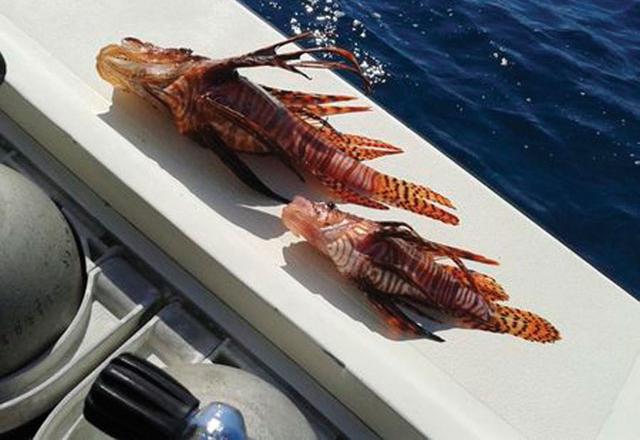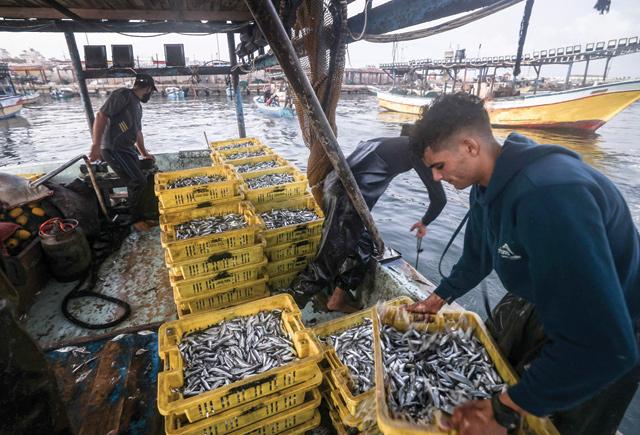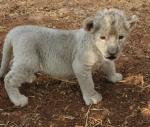You are here
Cayman Islands take ‘can’t beat ‘em, eat ‘em’ stance on lionfish
By Reuters - Apr 14,2015 - Last updated at Apr 14,2015

GEORGE TOWN, Cayman Islands — In a reef just off the popular USS Kittiwake dive site in Grand Cayman, hunters armed with spears seek out lionfish — an invasive species so destructive that authorities want them caught and served up as a tasty dish.
With their striking pectoral fins and venomous dorsal spikes that fan out like a lion’s mane, the rampant lionfish have few natural predators and eat up smaller fish, shrimp and crab that protect the reef.
The Cayman Islands are fighting back with a campaign that encourages local divers to hunt lionfish, that are numbered in the tens of thousands, so that restaurants can serve them up to tourists.
Call it the “if you can’t beat ‘em, eat ‘em” approach.
Lionfish has begun to match grouper, snapper and mahi-mahi as a delicacy in Cayman, where more than a dozen restaurants now have them on the menu.
“Boy, are they good to eat,” said celebrity Spanish chef José Andrés, who went hunting during a Cayman Cookout event. “Their sweet, white meat is unbelievable as a ceviche or sautéed with fresh herbs,” he said.
After a diver speared one on a recent trip, a teenage girl on vacation from Texas inspected the foot-long catch approvingly.
“I had lionfish tacos at Tukka,” she said of a restaurant on the island.
Thomas Tennant, a chef for the upscale Michael’s Genuine Food & Drink, now buys 54kg of lionfish a week from local divers at $12.10 a kilo, serving diners a variety of dishes from raw, to a sandwich and a main course.
Native to the Indo-Pacific, lionfish are believed to have spread after some escaped from a private aquarium in south Florida during Hurricane Andrew in 1992.
They have since migrated throughout the warm waters of the Gulf of Mexico, the Caribbean, and even the eastern US seaboard as far as Rhode Island, where they die in winter.
The fish are small and only 40 per cent of the body is edible meat after removing the head, spines, and bones, meaning time-consuming work for chefs.
The concept of eating them has caught on elsewhere too. A Lionfish Festival, dubbed ‘Feast on the Beast’ was held last month in southwest Florida with local chefs in Fort Myers cooking up 200 pounds of lionfish fillets to benefit a local charity.
There is no way to calculate the size of the invasion.
“The number would be astounding,” said Lad Akins, director of special projects at REEF, an ocean conservation nonprofit based in the Florida Keys.
Site densities of 3,000 lionfish in an area roughly the size of a US football field have been found in the Caribbean and the Gulf of Mexico, he said. A commercial lionfish export company, Spinion Ltd., created in the Cayman Islands in 2012, sells an average of 90 to 115 kilos a week to five local restaurants.
With rising demand, some restaurants, including Guy Harvey’s, are now importing lionfish from Honduras.
“We didn’t have enough lionfish here to satisfy the customer,” Bruno Deluche, Guy Harvey’s manager, said.
Related Articles
CHICHIRIVICHE, Venezuela — The dazzling, colorful lionfish is a must for any exotic aquarium, but it has also become a major threat to the w
“I travel [to] different countries... to learn from the grandmothers. Then I get these old recipes and I bring it to my laboratory here and we try with my chefs to give it something of a modern touch,” he said.
He is angling for more discerning catches like grouper, sea bream and large shrimp, which can go for around 70 shekels ($22) a kilo — a small fortune in the impoverished enclave, under Israeli blockade since 2007.


















